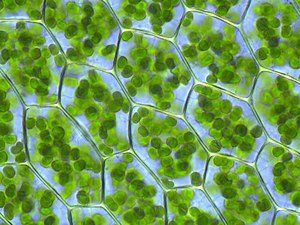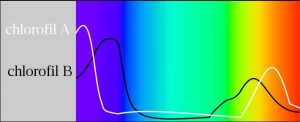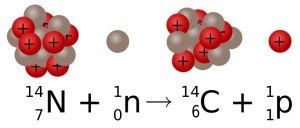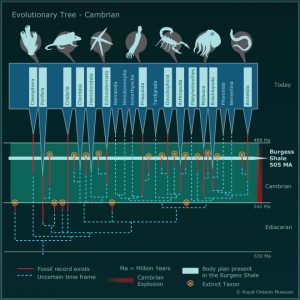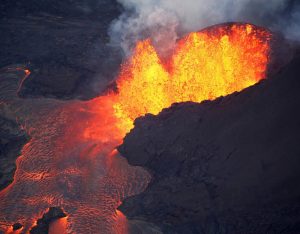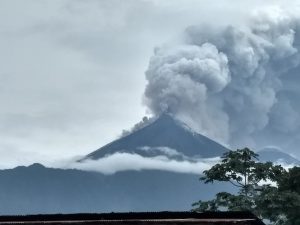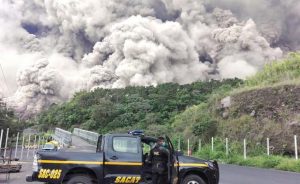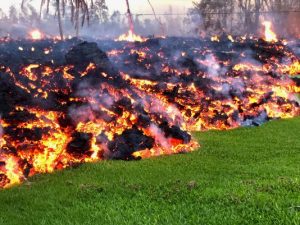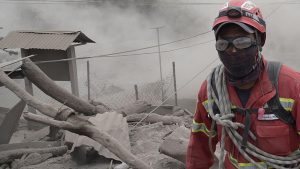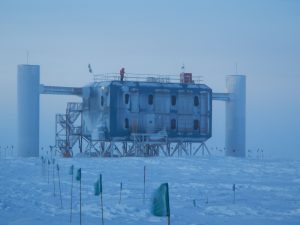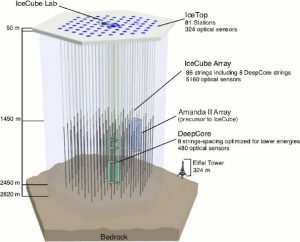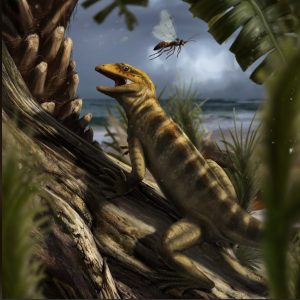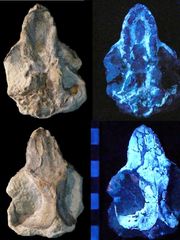Some really out of this world stories have taken place this past month. I think I’ll start with Jupiter, the king of the planets.
NASA’s Juno spacecraft has been studying Jupiter for over a year now, traveling on a highly elliptical polar orbit. That means part of its orbit passes very close above the planet’s poles while other parts of the orbit are at a much greater distance from Jupiter. The image below shows how a highly elliptic orbit works.

One of the interesting aspects of the Juno mission is that NASA is releasing the raw images taken by the spacecraft’s cameras online and allowing citizen scientists to combine and enhance the images. Whether or not these amateur astronomers make any major discoveries they have certainly already produced some wonderfully artistic views of the planet. The image below, which rivals the best work of any avant garde painter, is the work of two such citizen scientists, Gerald Eichstädt and Seán Doran.

The Juno spacecraft is also helping to solve some long standing mysteries of the Solar Systems largest planet. For example, it’s been known for decades that lightning occurred in the planet’s atmosphere, some of which was far more powerful than any lightning here on Earth. Well, based on data sent back by Juno, the scientists at NASA have discovered that, while the lightning on Jupiter is generated in much the same way that it is on Earth, nevertheless the lightning on Jupiter is concentrated around the poles rather than being spread around the planet as it is on our planet. The image below shows a composite of many images of lightning captured by the Juno spacecraft.
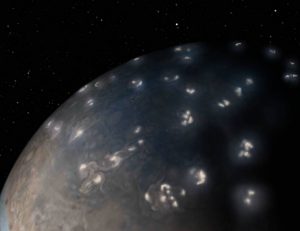
Another spacecraft, the Japanese probe Hayabusa-2 has arrived at its destination the asteroid Ryugu after a 300 million kilometer journey that began back in December 2014. It didn’t take long for the Hayabusa-2 to make a major discovery for the asteroid has a very peculiar shape, that of a diamond, see image below.

The spacecraft is expected to touch down onto the asteroid’s surface in an attempt to gather some material which is scheduled to be returned to Earth in late 2020. Hopefully that means that the spacecraft’s revealing of the asteroid’s shape is just the first in what will be a long series of discoveries.
Now you may remember that the Cassini spacecraft made its final plunge into Saturn’s atmosphere last September (See my post of 13September2017). However the data sent back by Cassini during it’s 13 years of exploring the ringed planet is still being analyzed so the spacecraft hasn’t finished making discoveries just yet.
One of the last maneuvers Cassini made before its final plunge was to actually pass through some of the material being ejected into space by the geysers it had earlier discovered on the moon Enceladus. These geysers are believed to be liquid water that was heated by the tidal friction between the moon, the planet Saturn and the larger moon Titan. (Much the same thing is believed to happen on Jupiter’s moon Europa) The image below, taken by Cassini, shows the geysers.

Now NASA has announced that their scientists have found evidence of complex organic molecules in the material Cassini passed through. This discovery increases dramatically the chances that some form of life may exist in an ocean under the protective ice cover enveloping the moon.
Finally Space X just seems to keep on adding on to their long string of space successes. Today’s launch of a Falcon 9 rocket with its Dragon capsule not only marked the beginning of Space X’s 15th resupply mission to the International Space Station (ISS) but was also a reuse of both the Falcon 9’s first stage and the Dragon capsule. Indeed the booster first stage had be used only ten weeks ago to launch NASA’s Transiting Exoplanet Survey Satellite (See my post of 28April2018) making this the fastest turnaround of a reusable first stage ever. The image below shows the launch of the Falcon 9 / Dragon capsule.

To date Space X has succeeded in recovering 25 Falcon 9 first stages and has reflown 14 of them in the company’s effort to reduce the cost of space travel by developing reusable launch vehicles and capsules. Space X did not attempt to land the Falcon 9 first stage after today’s launch however because the company is phasing out its ‘block 4’ design in favour of the new ‘block 5’ boosters which are optimized for reuse.
Also, in just a few months, Space X is scheduled to conduct the initial, unmanned test flight of what will become its crewed Dragon capsule. I can’t wait for that!






